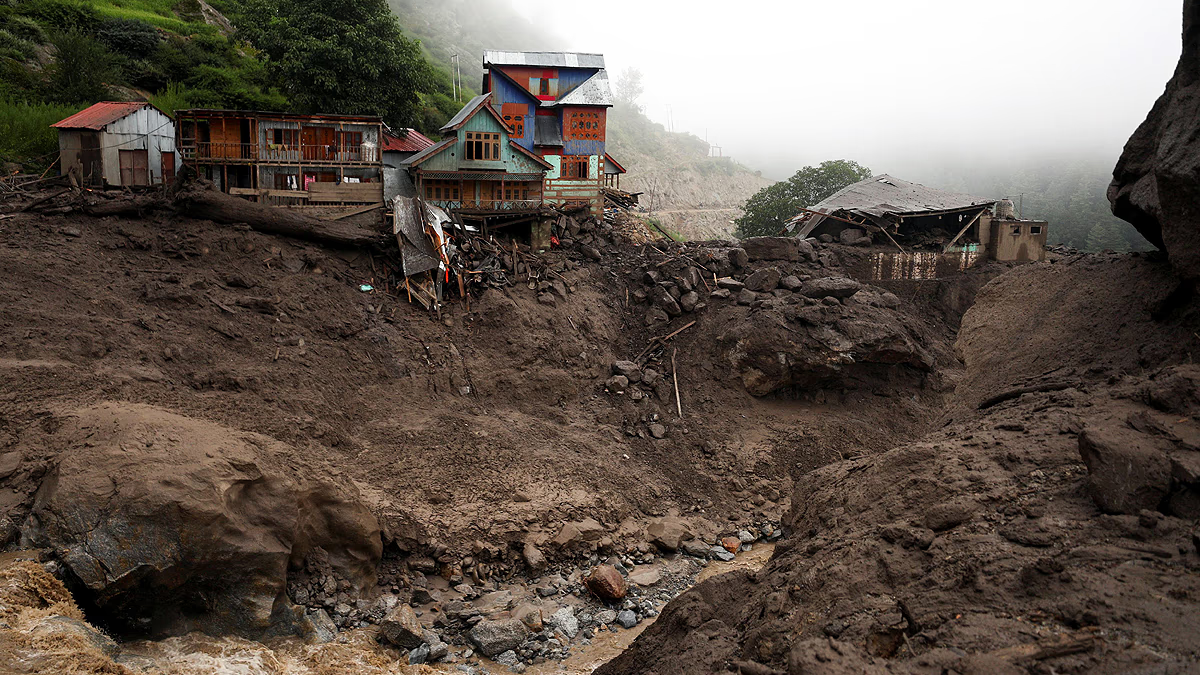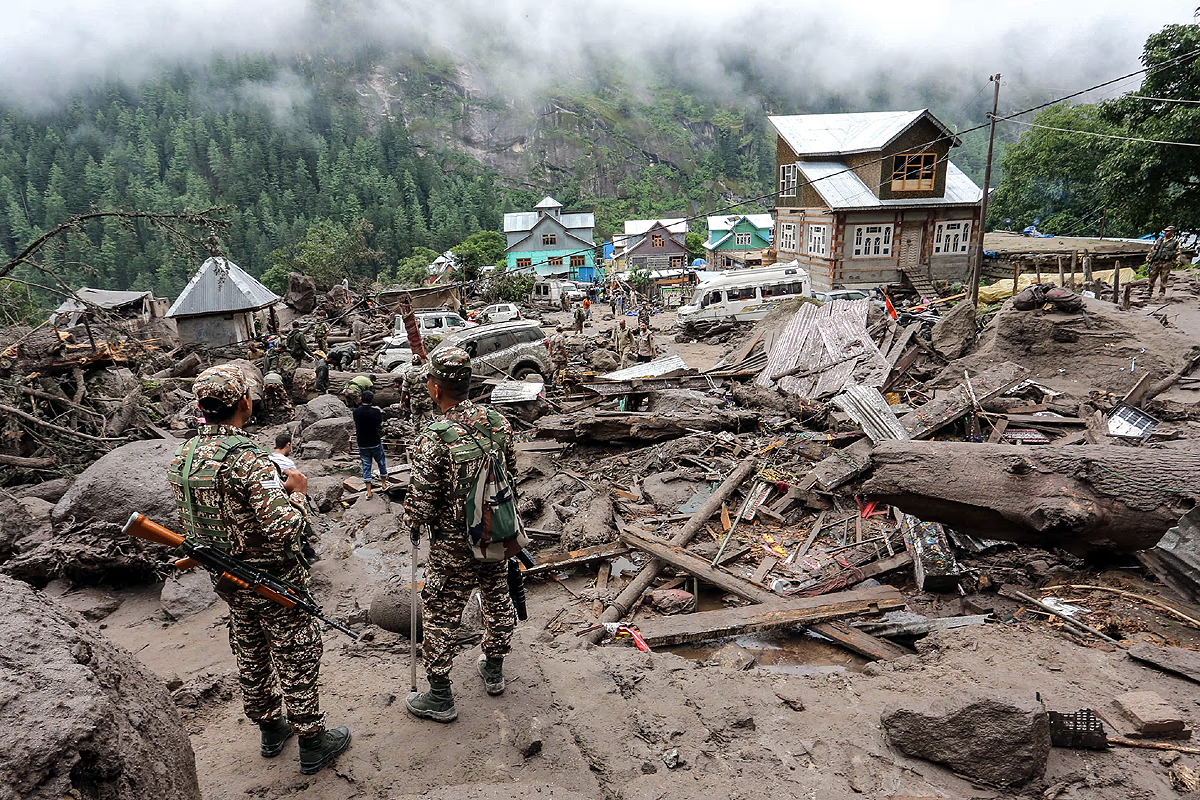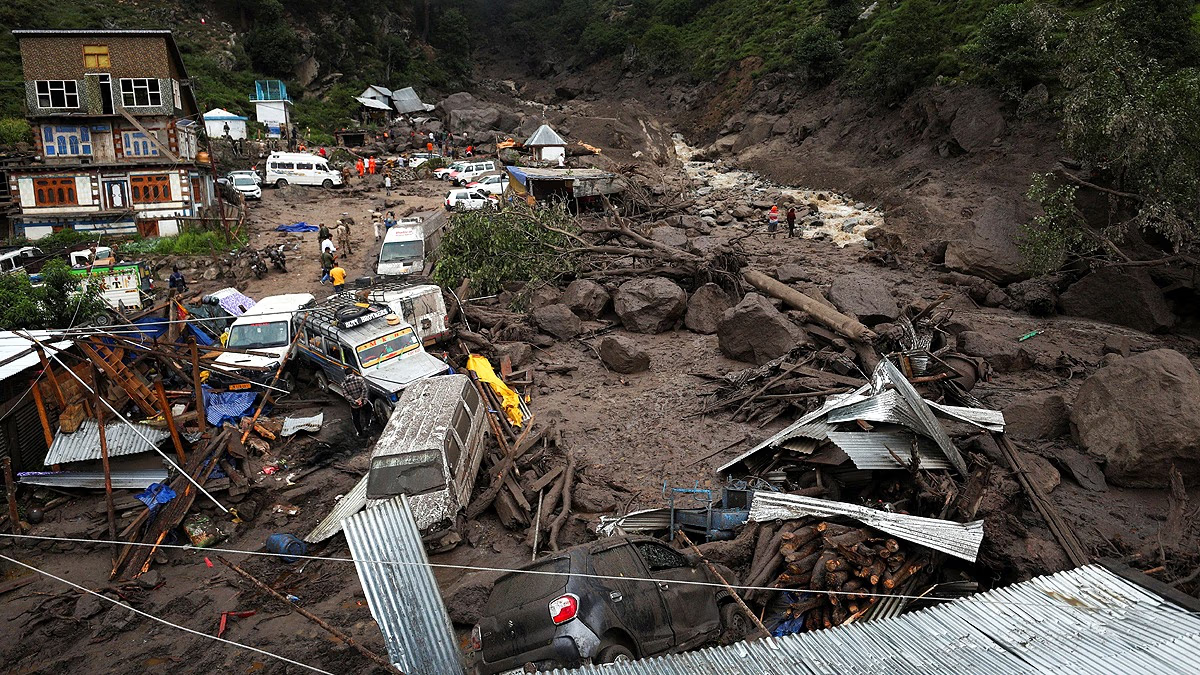In India, particularly in the Himalayan regions, cloudburst events have significantly increased over the past few decades. These incidents bring heavy rainfall within hours over small areas, leading to floods, landslides, and substantial devastation. But why are these events becoming more frequent?
When have cloudbursts occurred in India? Let's explore the causes and impacts. We will provide a detailed list of all major incidents in recent years to help you comprehend the situation thoroughly.
What is a Cloudburst?
According to IMD, when more than 100 millimeters (10 centimeters) of rain falls within an hour over a small area of 20-30 square kilometers, it is termed a cloudburst. Some scientists also consider 50-100 millimeters of rain in two hours as a ‘mini cloudburst’.
This occurs when moisture-laden air climbs the mountains. At altitude, cumulonimbus clouds form, becoming so heavy that they suddenly release all the water, causing floods and landslides.

Source: aajtak
Causes of Cloudbursts
Geographical Causes: The high mountains and slopes of the Himalayas uplift the air, a process known as ‘orographic lifting’. This enhances rainfall. Deforestation, improper constructions, and settlements on mountains exacerbate this threat.
Climate Change: Global warming is heating the oceans, increasing moisture in the air. Warmer air can hold 7% more water per degree Celsius rise in temperature, intensifying cloudburst events.
Human Causes: Deforestation, dam construction, and inadequate drainage systems prevent water absorption, escalating floods and landslides.
Monsoon Influence: Moisture from the Bay of Bengal and Arabian Sea collides with the Himalayas, creating heavy rainfall. Western Disturbances also contribute.
Detection Challenges: Cloudbursts occur over very small areas and suddenly, making precise forecasts challenging for meteorologists.

Source: aajtak
Impacts of Cloudbursts
Floods and Landslides: Intense rain swells rivers and causes mountain soil to collapse.
Loss of Life and Property: Homes, crops, roads, and buildings are destroyed, leading to fatalities.
Communication and Power Disruption: Bloackages delay aid from reaching affected areas.
Environmental Damage: Soil erosion, river pollution, and forest destruction occur.
Economic Impact: Tourism and agriculture suffer, threatening livelihoods.

Source: aajtak
Detailed List of Cloudburst Events in India
Between 1970 and 2016, only 30 official cloudburst events were recorded, but recent years have seen an increase. Here is a list of notable events over the past 100 years...
September 28, 1908, Hyderabad (Telangana): The Musi river flooded. Over 15,000 people died and 80,000 homes were destroyed, one of the largest events at the time.
July 20, 1970, Alaknanda Valley (Uttarakhand): Cloudburst between Joshimath and Chamoli swept away remnants of Gohana lake. Buses and villages were destroyed, with hundreds killed.
July 26, 2005, Mumbai (Maharashtra): 950 millimeters of rainfall caused over 1,000 deaths, halting roads, railways, and air services.
August 6, 2010, Leh (Ladakh): Over 200 millimeters of rain fell, killing 179 people and injuring 400. The airport and military sites were destroyed.
June 15–17, 2013, Kedarnath (Uttarakhand): Mandakini and Alaknanda rivers flooded. Between 6,000 and 10,000 people died and over 100,000 were stranded. This was the largest disaster in the Himalayas.
May 4, 2018, Belgaum (Karnataka): 95 millimeters of rain, but minimal damage.
May 12, 2021, Tehri and Chamoli (Uttarakhand): Heavy rains occurred, but no major damage was reported.
July 28, 2021, Kishtwar (Jammu & Kashmir): 26 deaths and 17 injuries in Hanzar village.
October 20, 2021, Salem (Tamil Nadu): 213 millimeters of rain filled ponds and rivers, but limited damage.
July 8, 2022, Pahalgam (Jammu & Kashmir): Cloudburst on Amarnath pilgrimage route killed 15 pilgrims.
August 2022, Himachal Pradesh and Uttarakhand: Multiple events, with dozens dead and flooding occurred.
August 6, 2025, Uttarkashi (Uttarakhand): Four deaths and over 50 missing in Dharali village. Hotels and homes were swept away.
August 14, 2025, Kishtwar (Jammu & Kashmir): 45 dead and 100 injured in Chashoti; Machail Mata pilgrimage was affected.
Increasing Cloudburst Incidents: Why?
Impact of the Himalayas:
The slopes and glaciers of the Himalayas intensify rainfall. Deforestation and dams have made this more dangerous.
Climate Change:
Warming seas are increasing moisture, heightening rainfall intensity. Some regions have seen rainfall increase by 20-50% since 1950.
Human Errors:
Improper constructions, unbridled tourism development, and lack of drainage exacerbate flooding.
Lack of Forecasting:
Meteorology departments can warn of heavy rain but cannot pinpoint exact locations and times.
Where is the Risk Highest?
Jammu & Kashmir:
Kishtwar, Pahalgam, and Amarnath areas.
Himachal Pradesh:
Kullu, Manali, Shimla, and Chamba.
Uttarakhand:
Kedarnath, Chamoli, Rudraprayag, and Joshimath.
Ladakh:
Leh.
Sikkim and Arunachal Pradesh:
Tawang and North Sikkim.




